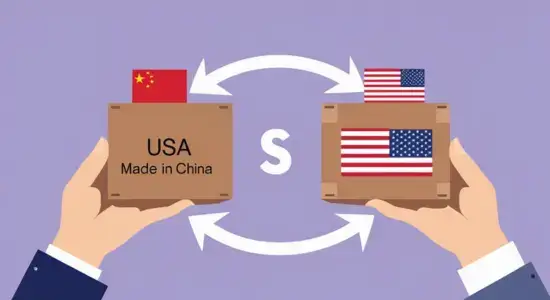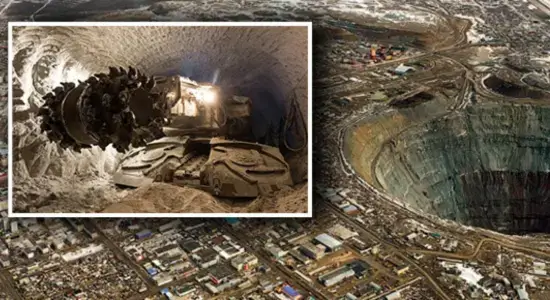The Rise of Trade Wars and Tariffs
In recent years, trade wars and retaliatory tariffs have become a dominant topic in global economic discussions. When countries impose tariffs on each other’s goods, it sparks a chain reaction of retaliatory measures that can have far-reaching consequences. This article dives into the complexities of these tariffs, their impact on global trade, and how they can disrupt economies worldwide.

What Are Retaliatory Tariffs?
Retaliatory tariffs are essentially taxes that one country imposes on imports from another country in response to tariffs already placed by that country. The purpose of these tariffs is to penalize the other country for its trade practices, with the aim of encouraging fairer trade. However, the consequences are not always as straightforward as they seem.
How Trade Wars Unfold: A Global Perspective
Trade wars typically begin when one country raises tariffs to protect its domestic industries. For instance, the U.S. has engaged in several high-profile trade wars, most notably with China. These actions have led to retaliatory tariffs from the affected countries, exacerbating the trade conflict and causing economic disruption.
China, in response to U.S. tariffs, increased tariffs on U.S. goods such as agricultural products, automobiles, and industrial equipment. Similarly, the European Union has targeted American goods like bourbon and motorcycles in retaliation to U.S. tariffs on steel and aluminum imports.
The Impact on Consumers and Producers
While tariffs are often intended to protect domestic industries, they can also raise costs for consumers and producers alike. For consumers, tariffs can lead to higher prices for imported goods, as manufacturers pass on the extra costs of tariffs. For producers, particularly in industries reliant on imported materials or parts, tariffs can disrupt supply chains, leading to delays and increased production costs.
For example, U.S. manufacturers in industries like electronics and automotive production may face rising costs due to higher prices on components imported from overseas. This can lead to higher prices for American-made products or even job losses as companies seek to mitigate these increased costs.
The Economic Impact: What Happens When Tariffs Escalate?
When tariffs escalate and trade wars intensify, the economic consequences can become severe. For one, global markets often experience volatility as investors react to the uncertainty created by ongoing trade disputes. Financial markets may fluctuate, and stock prices could take a hit, especially for companies that depend heavily on international trade.

Furthermore, the escalation of trade wars can lead to a decrease in global economic growth. According to economists, prolonged trade conflicts can stifle investment and consumer confidence, making it harder for economies to grow. Additionally, the cost of production for businesses worldwide increases, as many companies rely on a global supply chain that spans multiple countries.
Real-World Example: The U.S.-China Trade War
The U.S.-China trade war is perhaps the most significant example of a modern-day trade conflict. Initiated by the Trump administration in 2018, it led to tariffs on hundreds of billions of dollars’ worth of goods traded between the two countries. While the U.S. aimed to protect domestic industries and reduce its trade deficit with China, the tariffs disrupted the global supply chain and raised prices for consumers.
China retaliated by imposing tariffs on U.S. goods, including soybeans and other agricultural products. This retaliatory measure had significant consequences for U.S. farmers, many of whom relied on Chinese markets for their exports. The trade war ultimately led to shifts in global trade patterns, as companies sought new markets and suppliers to avoid the tariffs.
The Long-Term Effects on Global Economies
In the long term, trade wars and retaliatory tariffs can reshape global trade dynamics. Countries may look to reduce their dependence on foreign trade or find new trading partners to mitigate the effects of tariffs. In some cases, countries may also seek to enter into trade agreements to offset the effects of tariffs, as seen in the U.S.-Mexico-Canada Agreement (USMCA) following the renegotiation of the North American Free Trade Agreement (NAFTA).
Can Trade Wars Be Avoided?
While trade wars have significant negative consequences, they are not inevitable. Governments can take steps to negotiate trade agreements and resolve disputes before they escalate into full-blown conflicts. Diplomatic efforts, such as the World Trade Organization’s dispute resolution mechanism, offer an opportunity for countries to settle trade disputes in a peaceful manner without resorting to punitive tariffs.
Moreover, fostering international cooperation on trade policies and tariffs can help mitigate the effects of trade wars and ensure a more stable global economy. Trade wars are not only costly for the countries directly involved but also for global markets, making it in the best interest of all nations to avoid unnecessary trade conflicts.
Conclusion: Navigating the Complexities of Global Trade
In today’s interconnected world, trade wars and retaliatory tariffs are a fact of life. They can create uncertainty in the global economy, disrupt supply chains, and negatively affect consumers and producers alike. However, by understanding the dynamics of these conflicts and working toward peaceful trade negotiations, countries can mitigate the risks and avoid the more destructive effects of trade wars.
As global trade continues to evolve, it’s important to keep an eye on the ongoing developments in tariffs and trade policies to better understand how they affect the broader economic landscape.
If you found this article insightful, don’t forget to explore more of our content on global economic trends and trade issues. Keep us bookmarked for news updates and analyses on economic policies, tariffs, and market impacts.






